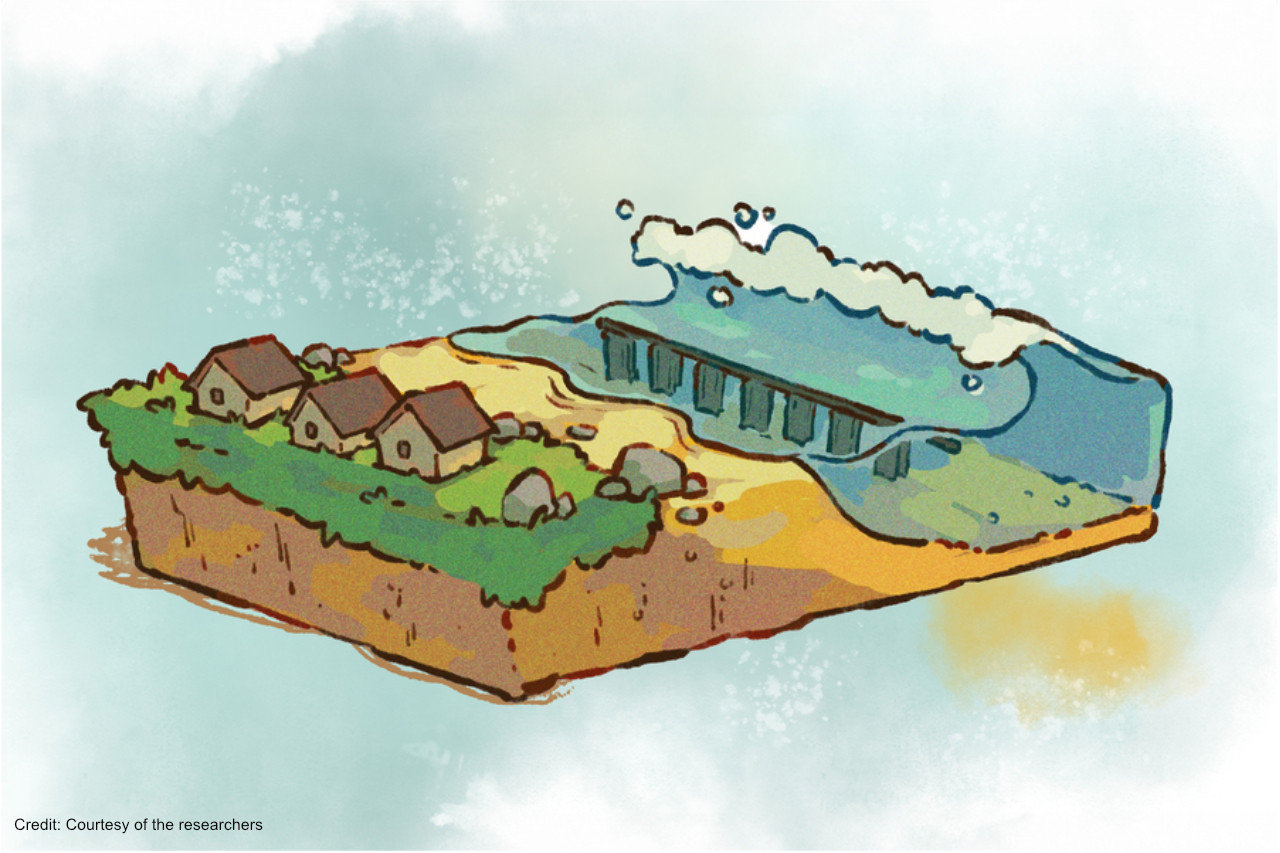Artificial reef designed by MIT engineers could protect marine life, reduce storm damage

The degradation of coral reefs due to climate change has left coastal communities vulnerable to flooding and erosion. To address this issue, an MIT team is developing "architected" reefs, offshore structures designed to mimic natural reefs' wave-buffering effects. Their design features cylindrical structures surrounded by rudder-like slats, which efficiently break waves into turbulent jets, dissipating wave energy. These engineered reefs use 10 times less material than existing artificial reefs while providing habitats for marine life. Fabricated from sustainable cement in voxel patterns, the structures can be assembled to form a semipermeable wall along coastlines. Lab-scale prototypes have shown that these reefs can reduce incoming wave energy by over 95 percent, offering a promising solution to coastal protection.
Michael
Triantafyllou, along with a team from MIT, has developed an innovative solution
to coastal erosion and flooding: architected reefs designed to mitigate wave
impact. These reefs act as long wave-breakers, reducing incoming waves from 6
meters to less than a meter in height, effectively preventing erosion and
flooding. Published in PNAS Nexus, their study details the reef design, which
features cylindrical structures surrounded by rudder-like slats. The team
includes MIT researchers and collaborators from various institutions. While
some regions have implemented artificial reefs for coastal protection, existing
designs vary and often require large amounts of material. The architected reef
offers a more efficient solution, using sustainable cement and voxel patterns
to reduce wave energy by over 95 percent.
The MIT team has developed an innovative artificial reef to protect coastal areas from wave energy while providing habitats for marine life. Unlike natural coral reefs limited to tropical waters, these architected reefs can be deployed in any water temperature, making them suitable for more coastal regions. The collaboration between MIT Sea Grant and the Center for Bits and Atoms resulted in a reef design that combines hydrodynamic principles with modular fabrication techniques. The idea originated from two separate projects: the development of ultralight cellular structures for aerospace applications and the assessment of blowout preventers in offshore oil structures. Testing revealed that the cylindrical arrangement of the reef structure efficiently dissipates wave energy, making it a promising solution for coastal protection.
The researchers utilized simulations of water flow to refine the design of the architected reef, experimenting with dimensions and additional elements to optimize wave dissipation. Through iterative testing, they arrived at an optimized geometry: a vertical cylinder surrounded by four long slats, allowing water to flow through the structure. This setup effectively breaks up incoming wave energy, redirecting it to the sides and dissipating its force. A laboratory-scale version of the reef was fabricated using 3D-printed plastic cylinders, each measuring about 1 foot wide and 4 feet tall. These cylinders were assembled into a fence-like structure and tested in a wave tank at MIT. The results showed a significant reduction in wave height after passing through the architected reef, demonstrating its efficacy in wave energy dissipation.
The research team is exploring ways to enhance the effectiveness and fish-friendliness of the architected reef structures. Instead of solid plastic, they are considering using a more affordable and environmentally sustainable cement material that has been tested to be harmless to fish. By molding the cement into a pattern of voxels, resembling stacked egg cartons, they can create pockets for fish habitat without compromising the reef's ability to dissipate waves. The team is currently fabricating cement voxel structures for lab-scale testing under various wave conditions. They envision the voxel design to be modular, scalable, and easy to transport and install in offshore locations. Moving forward, they plan to collaborate with Massachusetts beach towns to pilot test the structures, which would be approximately a mile long, 5 meters tall, and cost around $6 million per mile. Despite the significant investment, the potential cost savings from preventing storm damage could be substantial, especially given the increasing threat of climate change to coastal areas. To learn more about this project, read Jennifer Chu’s article https://news.mit.edu/2024/artificial-reef-designed-mit-engineers-protect-marine-life-reduce-storm-damage-0326